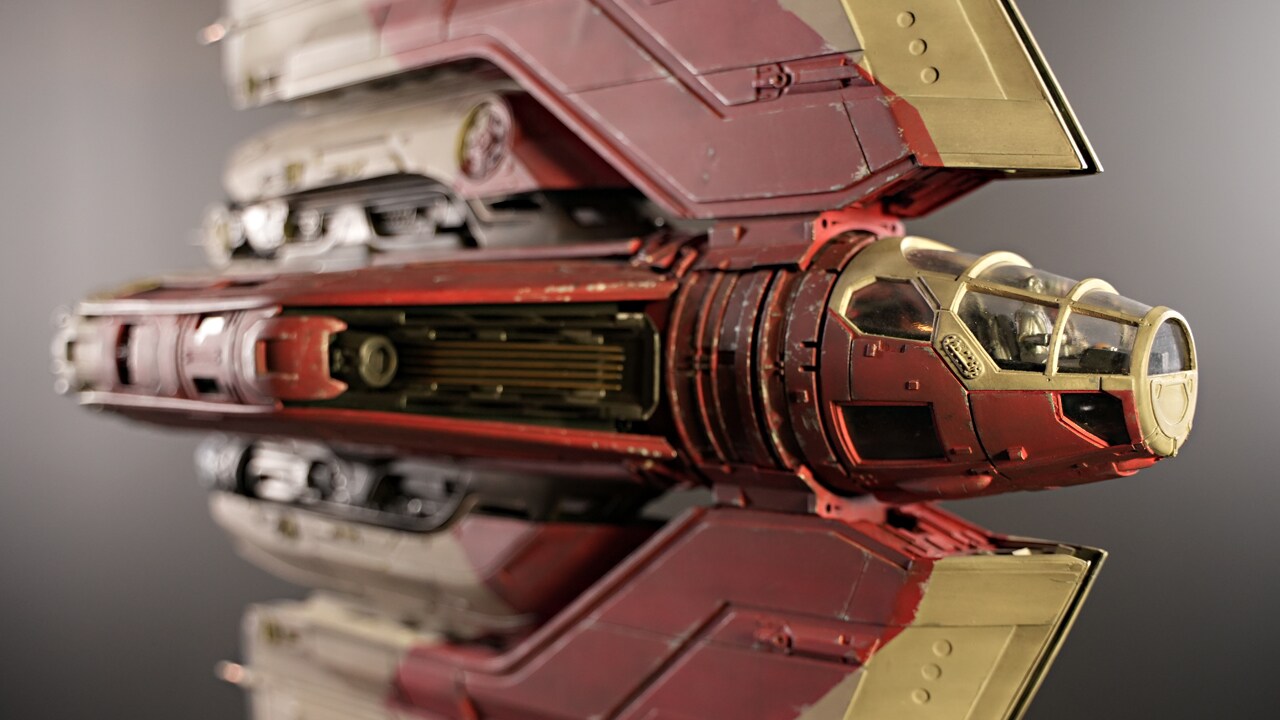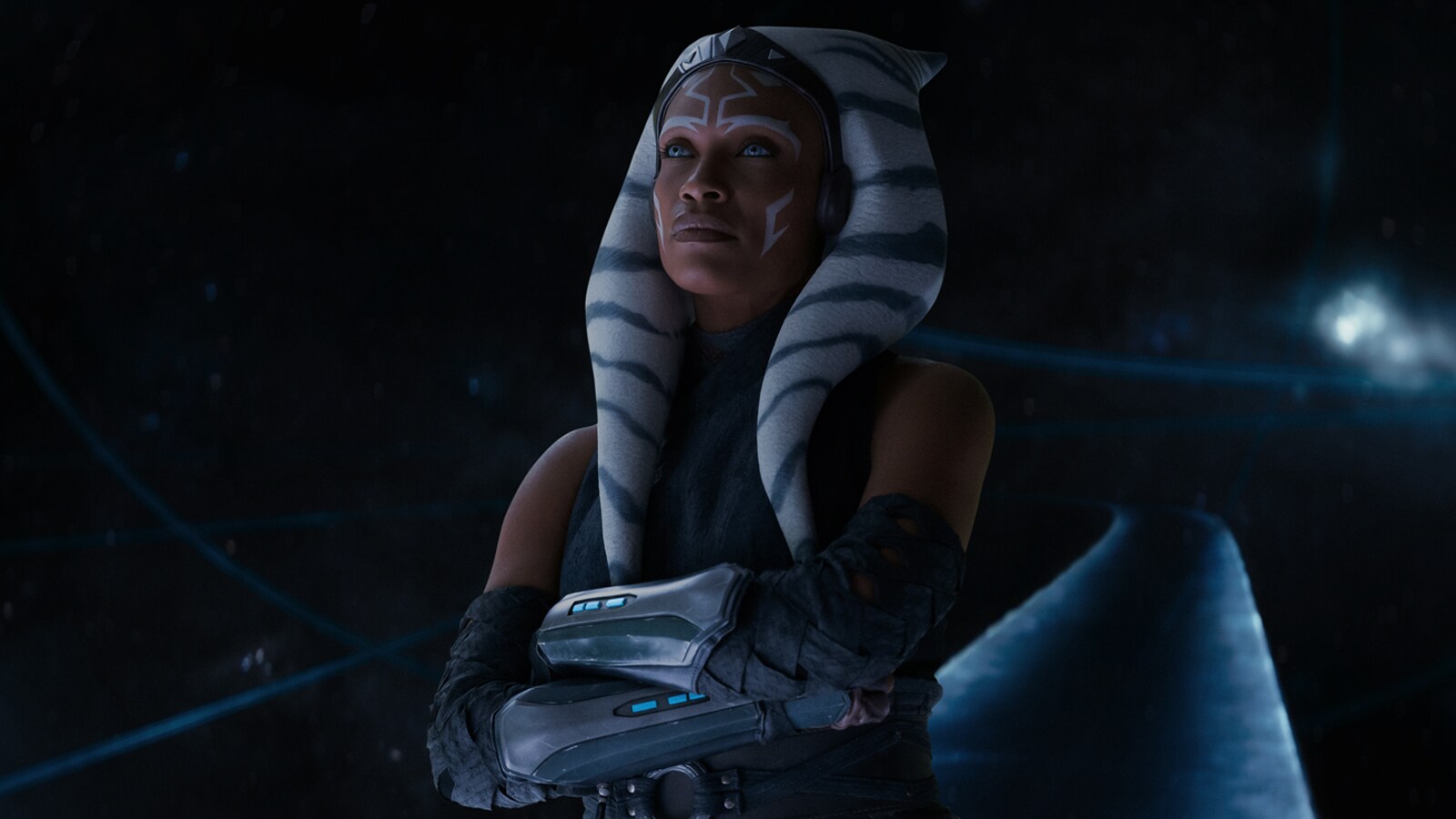There was something strikingly familiar about Ahsoka Tano’s Jedi shuttle, the T-6 1974. “I already know this ship,” model maker John Goodson thought as he set to work building the craft that would transport Tano and Professor Huyang on their first live-action adventure in Ahsoka, now on Disney+.

However, the physical creation of Tano’s shuttle was its own journey, bringing the unique mode of transportation first created for the Jedi of the prequels and Star Wars: The Clone Wars back to the screen with a painstakingly crafted and intricately mechanized model.
“It was a slightly different version, but it was the same design,” Goodson tells StarWars.com. “It was the same big semi-circular wing with a cockpit and three engines in the back.” But to build it as a functional, camera-mountable model? “It's the most mechanically complex thing I've seen in a long time,” he says. “This ship is different from anything else that we've worked with.”
Goodson, who first started at Industrial Light & Magic in 1988 working on Ghostbusters II, had helped create a whole fleet of the Jedi Order shuttles as a concept model maker on Star Wars: Attack of the Clones about two decades prior. But in recent years, after a stint in digital model making, Goodson returned to ILM and his love of building physical models, creating the production models of the Razor Crest and Moff Gideon’s light cruiser for The Mandalorian among others.

Whether creating physical or digital models, “you're making a lot of the same choices in terms of how you build in the mechanical language, which really makes it convincing that this thing is real and functions,” Goodson says. While working on Rogue One: A Star Wars Story, for example, Goodson and artist Colie Wertz designed and modeled cargo ships, adding a rail system to the creation’s otherwise flat roof. In Goodson’s mind, a cargo hauler would utilize every square inch for containers. The functional design helps viewers become fully immersed in the galaxy, without the need for details on how every facet and component works. “Maybe you could put containers on top of it. If you build that out, you don't have to explain it. Nobody else has to know how it works. But if you work through it in your own head and you understand the concept, that will telegraph. It will read as something realistic that is functional. Those are the kind of choices that you're making, whether you're doing a physical model or a digital model.”

Return to Kerner
For Ahsoka, Goodson spent nearly four months working full-time in his Marin County garage to sculpt, cast, and fabricate Tano’s T-6 shuttle for the era of the New Republic with help from machinist Dan Patrascu who added the mechanical innards. “It was really complicated,” Goodson says.
For eight hours each day, Goodson vacuum formed and fabricated individual parts, instead of simply 3-D printing the majority of the model from a digital file. Despite its popularity, 3-D printed pieces are delicate, Goodson says, and for a hero ship that will be mounted to a motion-control rig for countless shots — sometimes colliding with the camera during production — the resulting piece isn’t sturdy enough to survive the process. “When you've got these models on stage and you remount them, they wind up getting manhandled a lot,” he says. “They've got to be robust. They really get a lot of abuse on stage. They have to be tough enough to withstand it.”
After cutting out wooden patterns, Goodson used heated plastic sheets to create the base of many of the model’s bigger pieces. Some of the largest elements, like the shuttle’s massive rotating wing, called for a visit to the original home of ILM, on Kerner Boulevard in San Rafael, California, to borrow the same equipment used by model makers for the original trilogy. “I didn't have a machine big enough,” Goodson says, “but the original 2-foot-by-2-foot vacuum former that they bought in 1975 for the first Star Wars is still at 3210 Studios.” Luckily, the current tenants were happy to oblige.
Goodson’s final creation weighs in at about 15 pounds with a rotating wingspan that stretches about 30 inches across. There are about 350 individual parts on the finished T-6 model, which includes everything from the smallest greeblies pulled from a long-forgotten model kit to the large vacuum formed segments.























